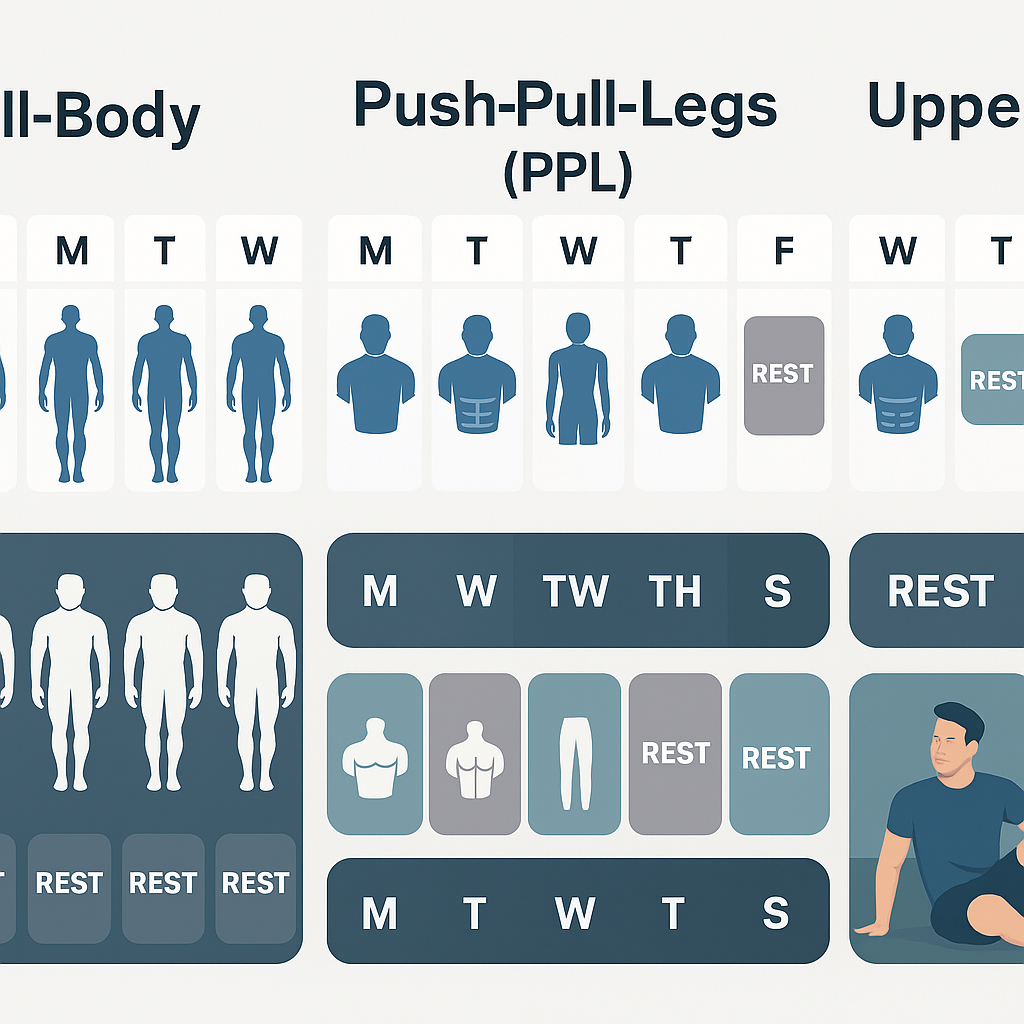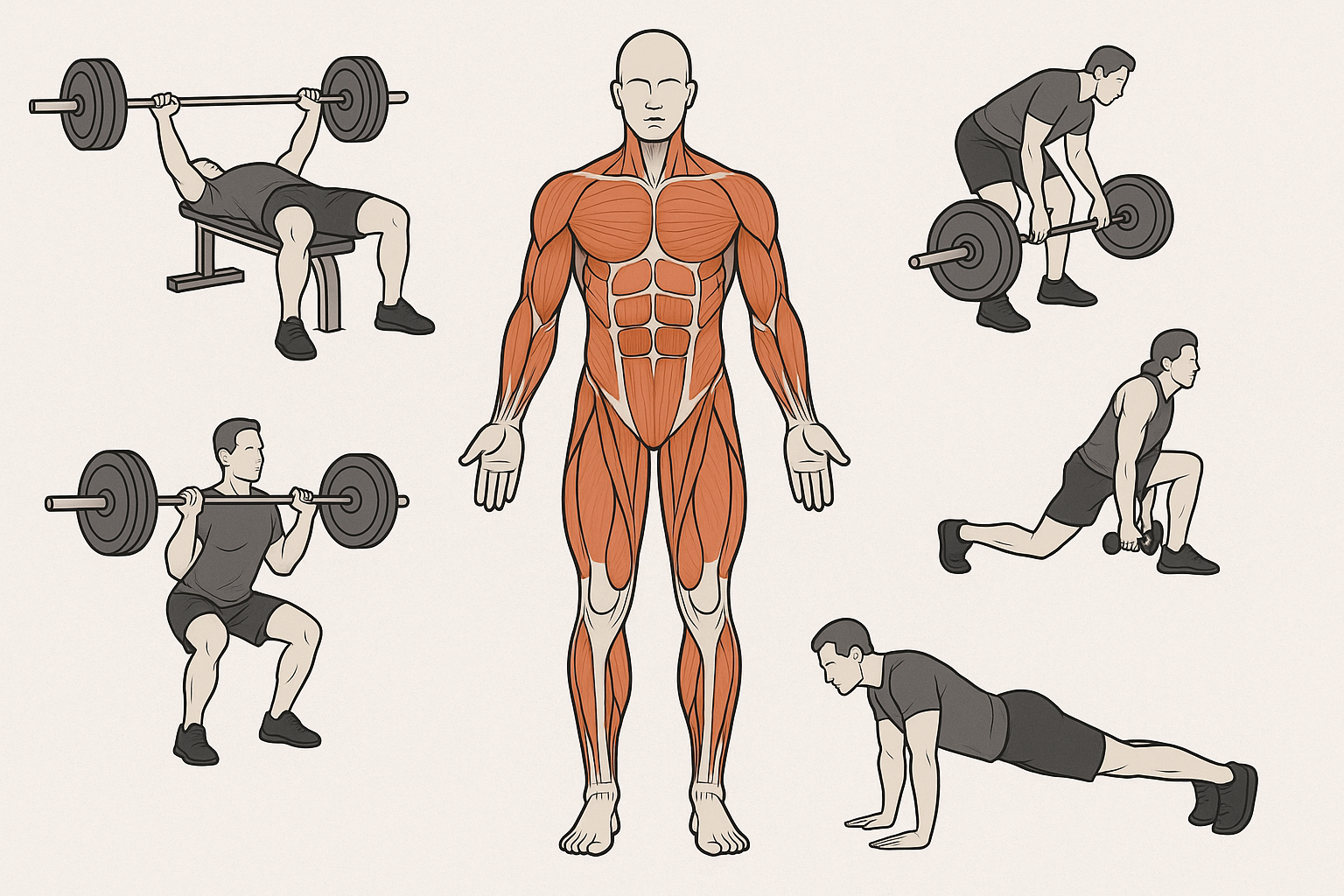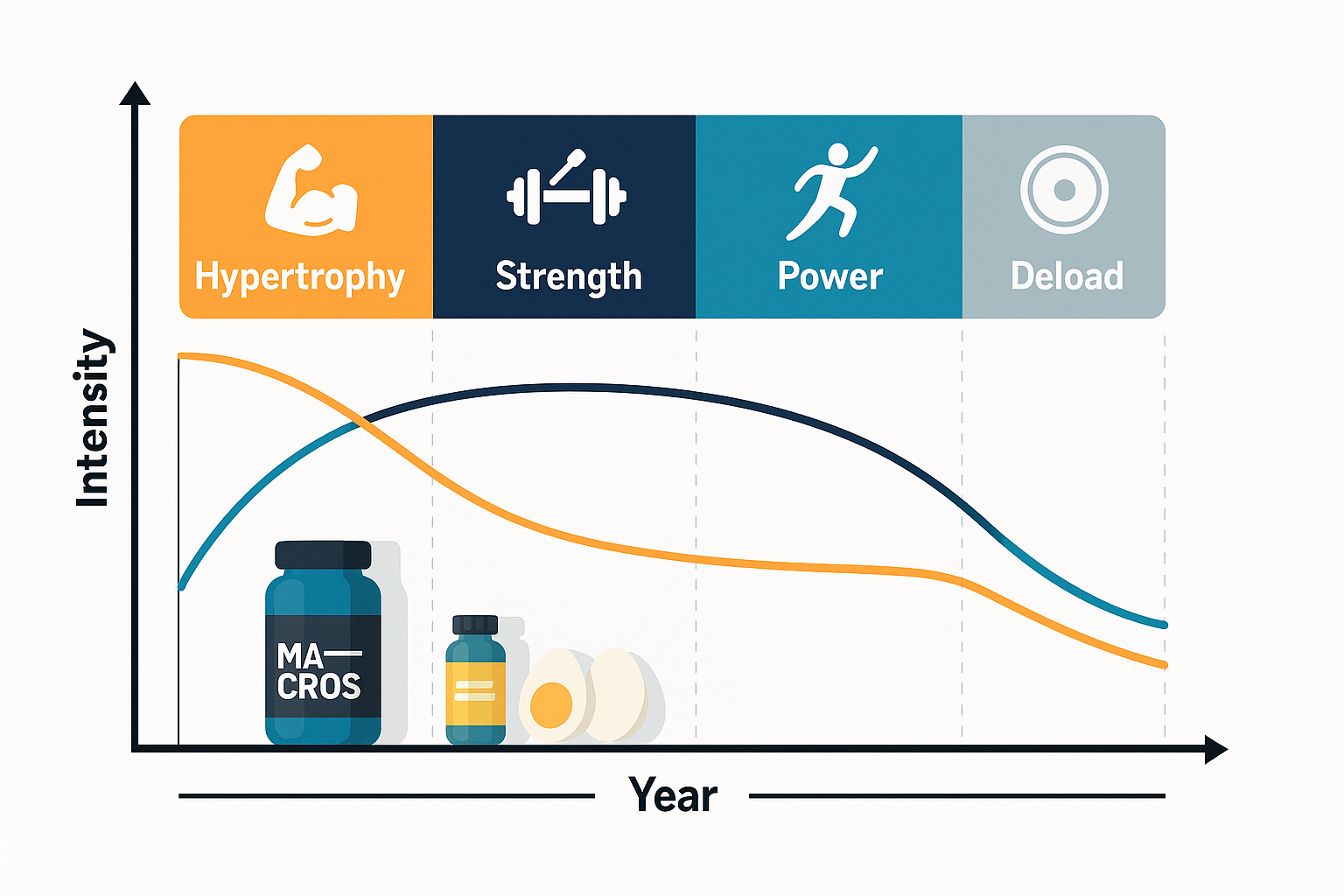Introduction
In the realm of strength training and fitness transformation, men often seek programs and exercise routines that not only enhance muscle mass but also foster long-term physical performance. While cardio and flexibility have their place in a balanced regimen, resistance training remains the cornerstone of muscular development, metabolic improvement, and overall strength. To establish a powerful and enduring workout framework, it’s essential to understand the fundamentals, mechanics, and practical implementation of a carefully curated list of resistance training exercises. This comprehensive guide is designed to empower men with evidence-based knowledge and actionable strategies to maximize their results through intentional, consistent resistance work.
You may also like: The Ultimate 30-Day Workout Plan for Men Working Out in the Gym: Proven Full Body Strength Exercises to Maximize Results
Why Resistance Training Is Foundational for Male Fitness
Resistance training forms the bedrock of effective strength and fitness programming for men. Unlike aerobic exercise, which primarily targets cardiovascular endurance, resistance-based movements stimulate hypertrophy, neuromuscular adaptation, and functional power. These benefits extend far beyond aesthetics, influencing metabolic health, injury prevention, and mental resilience. The hormonal response triggered by resistance workouts—particularly the release of testosterone and growth hormone—further supports muscle growth, fat oxidation, and emotional stability.
Men in different age groups can also experience varied advantages from consistent strength training. Younger individuals typically benefit from quicker muscle adaptations, whereas middle-aged and older men may leverage resistance workouts to combat sarcopenia, improve bone density, and maintain independence. Furthermore, strength training can be tailored to specific goals, whether focused on hypertrophy, strength, endurance, or athletic performance, making it a versatile modality for all fitness levels.

Exploring the Ultimate List of Resistance Training Exercises
Creating a complete and functional workout program requires more than random exercise selection. The ultimate list of resistance training exercises should be comprehensive, including compound movements that engage multiple muscle groups, isolation exercises to target specific areas, and mobility-enhancing drills to support long-term joint health. Exercises like the barbell squat, deadlift, bench press, pull-up, and overhead press form the backbone of strength development.
These foundational movements are effective because they activate numerous muscles simultaneously, which not only improves efficiency but also stimulates the nervous system more intensely. Complementary exercises such as lunges, dumbbell rows, and dips add balance and variety, allowing lifters to refine weaker areas and reduce muscular imbalances. Incorporating resistance bands, kettlebells, and bodyweight variations further diversifies training stimuli and supports progressive overload without excessive equipment reliance.

Best Practices for Implementing Group Strength Exercises in a Resistance Plan
Group strength exercises provide an environment of camaraderie, structure, and mutual motivation. Men who participate in group-based resistance sessions often benefit from increased accountability, improved adherence, and enhanced performance through shared energy and friendly competition. These group formats—whether conducted in gym classes, personal training circuits, or informal lifting crews—also offer opportunities for feedback and form correction.
When designing or joining a group resistance training session, it’s essential to ensure that the exercises included align with each participant’s goals and capabilities. Compound exercises such as deadlifts, squats, and military presses work well in group settings because they can be modified for different skill levels while maintaining high effectiveness. Time-based intervals, EMOM (every minute on the minute), and circuit formats can help streamline group sessions without sacrificing intensity or personalization.
Moreover, group workouts foster a consistent routine, particularly valuable for men balancing demanding schedules. The social dynamic inherent in group strength exercises reduces training monotony, turning workouts into engaging, collaborative experiences rather than solitary obligations. These advantages make group formats a powerful addition to any resistance training strategy.
Understanding How to Structure Your Weekly Training Split
One of the most critical elements in programming resistance training is determining the appropriate weekly split. A training split refers to how exercises are organized across the week, allowing for focused muscle group targeting while ensuring adequate recovery. The most common approaches include full-body splits, push-pull-legs (PPL), upper-lower splits, and hybrid models.
Full-body routines, performed three to four times per week, are ideal for beginners or individuals with limited gym time. These sessions usually include one to two compound lifts per workout, supported by accessory movements. In contrast, the PPL split allows for higher frequency and volume by dividing exercises into mechanical functions—pushing (chest, shoulders, triceps), pulling (back, biceps), and legs (quads, hamstrings, glutes).
Advanced lifters may gravitate toward upper-lower splits to alternate between upper- and lower-body sessions across four to six days. These configurations support greater training volume and allow for increased intensity and variation. Importantly, regardless of split, recovery and periodization should be factored in to prevent overtraining, support adaptation, and maintain long-term progress.

Building Strength Through the Best Resistance Training for Women and Why It Applies to Men
While many strength programs differentiate between male and female training, the physiological principles of resistance development apply across genders. Some of the best resistance training for women—focusing on compound movements, progressive overload, and consistent execution—are equally effective for men. The common misconception that certain exercises are “gendered” often leads to unnecessary limitations in programming.
Men can learn from programs designed for women, particularly in their emphasis on glute and core engagement, balanced development, and injury prevention. For example, hip thrusts, Romanian deadlifts, and resistance band abductions are staples in many women’s routines but offer substantial benefits to male athletes as well. Integrating such movements improves pelvic stability, posterior chain development, and overall athleticism.
Moreover, shared training concepts such as tempo control, rest intervals, and accessory work apply universally. A comprehensive understanding of what makes resistance routines effective for women can broaden a man’s training vocabulary and reduce the risk of muscular imbalance, leading to better performance and resilience across sports and daily activities.
Core Components of the List of Resistance Training Exercises for Balanced Development
The effectiveness of a training regimen lies in the balance and diversity of its components. The core list of resistance training exercises should strategically include upper-body pushes and pulls, lower-body compound lifts, and unilateral movements. This multidimensional approach promotes not just muscle growth but also joint stability, balance, and coordination.
Upper-body push exercises—such as the bench press, overhead press, and dips—focus on the pectorals, deltoids, and triceps. Their pulling counterparts—like pull-ups, chin-ups, and bent-over rows—target the lats, rhomboids, and biceps. Meanwhile, lower-body power is developed through exercises like barbell back squats, front squats, deadlifts, and Bulgarian split squats, which enhance posterior chain strength and dynamic force production.
Including isolation exercises such as biceps curls, triceps kickbacks, and calf raises allows lifters to target specific muscle groups, especially where weaknesses or asymmetries exist. Unilateral movements such as single-leg Romanian deadlifts or one-arm dumbbell presses challenge stability and correct dominance issues. The integration of these categories into a weekly plan ensures a comprehensive, well-rounded training experience.

Optimizing Results With the Full List of Strength Training Exercises
A successful resistance plan goes beyond individual exercise selection—it requires the thoughtful integration of movement categories, equipment variety, and training variables. The full list of strength training exercises includes a combination of free weights, machines, cables, resistance bands, and bodyweight techniques. Each modality offers unique benefits depending on the goal, experience level, and training environment.
Free weight exercises such as the barbell deadlift and dumbbell bench press engage stabilizing muscles and encourage functional carryover to real-life movements. Machines like the leg press and cable crossover can isolate muscles effectively while providing safer alternatives for those with injury concerns. Resistance bands allow for accommodating resistance, where tension increases through the range of motion, particularly beneficial for joint health and mobility.
Periodically rotating exercise modalities and altering movement patterns helps prevent plateaus and promotes continual adaptation. For instance, replacing barbell squats with front squats or alternating between wide-grip and close-grip pull-ups stimulates muscle growth through new recruitment patterns. Tailoring the list of strength training exercises to suit evolving goals, preferences, and physical feedback enhances sustainability and engagement.
Incorporating Group Strength Exercises Into Gym-Based Training Routines
Gym environments offer an ideal setting to integrate group strength exercises into structured programs. These group workouts can be tailored for hypertrophy, endurance, or strength, allowing men to train with purpose while enjoying social reinforcement. Properly managed group sessions deliver high-intensity training with minimal downtime, utilizing tools like circuit formats, supersets, and timed intervals.
One effective method is the small-group personal training model, where 3–6 individuals rotate through stations or perform synchronized sets. This format retains individualized attention while maintaining group dynamics. Warm-ups, cooldowns, and coaching cues are standardized, ensuring consistency and safety throughout the session.
Group training also promotes technique mastery, as peers and trainers often observe and correct form. This collaborative learning accelerates proficiency and reduces injury risks. Furthermore, group strength exercises build a sense of accountability—knowing others rely on your attendance boosts commitment and fuels ongoing participation.
Recovery, Nutrition, and Lifestyle Considerations for Resistance Training Success
Resistance training doesn’t operate in a vacuum; it must be supported by recovery, nutrition, and lifestyle practices to yield sustainable results. Recovery begins with rest and sleep—seven to nine hours of quality sleep each night allows for hormonal regulation, tissue repair, and mental rejuvenation. Active recovery methods such as foam rolling, stretching, and low-impact cardio can reduce muscle soreness and maintain mobility.
Nutrition plays an equally pivotal role. Adequate protein intake—typically 1.6 to 2.2 grams per kilogram of body weight per day—supports muscle repair and growth. Carbohydrates replenish glycogen stores, especially following high-volume training, while healthy fats regulate hormone production. Micronutrients like magnesium, zinc, and vitamin D aid performance, recovery, and immune health.
Lifestyle factors such as stress management, hydration, and work-life balance also impact training outcomes. Chronic stress can hinder performance, elevate cortisol, and compromise recovery. Establishing routines, managing expectations, and prioritizing mental well-being ensures the long-term sustainability of your resistance training journey.

Long-Term Periodization Strategies for Continued Strength Gains
To ensure ongoing progress, resistance training should be structured through periodization—an organized approach that varies training intensity, volume, and focus over time. This strategy reduces injury risk, prevents plateaus, and optimizes adaptations. Periodization includes cycles such as mesocycles (4–6 weeks), macrocycles (several months), and microcycles (1 week).
Linear periodization progresses from lower intensity and higher volume to higher intensity and lower volume. Undulating models, on the other hand, change variables within the same week, allowing for more dynamic and responsive adaptations. Advanced lifters may employ block periodization, focusing on specific attributes—hypertrophy, maximal strength, power—in sequential phases.
Deload weeks are essential, providing temporary reductions in volume and intensity to facilitate recovery. These programmed breaks prevent overtraining, restore motivation, and prime the body for future gains. By applying periodization to the list of resistance training exercises, men can train year-round with consistency, intention, and longevity.

Frequently Asked Questions
1. What Are the Most Overlooked Exercises in the List of Resistance Training Exercises?
Many gym-goers prioritize well-known movements like squats and deadlifts, but some equally valuable exercises often go unnoticed. Movements such as face pulls, rear delt flyes, and hip thrusts are underrated yet critical for maintaining muscular balance, shoulder health, and glute activation. These exercises can correct posture, reduce injury risk, and contribute to a more symmetrical physique. Additionally, incorporating wrist curls and reverse lunges from the list of resistance training exercises can enhance grip strength and improve unilateral leg power, respectively. Understanding these lesser-used but effective exercises can elevate your training outcomes and ensure more comprehensive muscular development.
2. How Can Beginners Start Safely With a Full List of Strength Training Exercises?
Starting resistance training can be intimidating, especially when faced with a comprehensive list of strength training exercises. For beginners, the key lies in mastering fundamental movement patterns—squatting, hinging, pushing, pulling, and carrying—before progressing to advanced techniques. Rather than jumping into high-load workouts, start with bodyweight versions or machines to learn proper form. Incorporating a progressive overload strategy, where volume or weight is gradually increased, allows safe adaptation over time. It’s also wise to track progress, utilize video feedback, or work with a qualified coach to ensure technique and form evolve alongside strength.
3. How Do Group Strength Exercises Improve Motivation and Consistency?
Training with others can significantly enhance accountability, consistency, and overall enjoyment of resistance workouts. Group strength exercises offer a supportive atmosphere that fosters camaraderie and friendly competition, encouraging individuals to show up and push harder. Participants often report higher adherence to workout programs due to the shared commitment and social reinforcement. Group dynamics also reduce the psychological burden of training alone and make fitness a shared goal rather than an isolated endeavor. Moreover, structured group programs often provide professional coaching, improving technique and ensuring progressive, balanced programming for all participants.
4. What Role Does Mobility Play in Executing the List of Resistance Training Exercises?
Mobility is a critical, often underestimated, factor in maximizing the effectiveness of the list of resistance training exercises. Without sufficient joint mobility—especially in the hips, shoulders, and ankles—athletes are more prone to compensatory movements and injury. Incorporating dynamic warm-ups and targeted mobility drills can dramatically improve movement quality and lifting efficiency. Exercises like deep goblet squats, thoracic rotations, and ankle dorsiflexion work help prepare the body for full ranges of motion. Making mobility a regular part of your routine enhances long-term performance, reduces discomfort, and ensures you can execute every lift safely and powerfully.
5. How Can You Periodize a List of Strength Training Exercises for Maximum Gains?
Periodization involves organizing your training into phases that target different physiological goals, and it’s vital for long-term success. A structured list of strength training exercises can be split into hypertrophy, strength, and power phases over the course of a year. For instance, an athlete might spend four to six weeks focusing on higher reps and volume for muscle growth, followed by a strength phase emphasizing low-rep, high-load lifts. Including deload weeks allows the body to recover while retaining adaptations. This cyclical approach prevents overtraining and plateaus while ensuring continuous improvement in muscle size, endurance, and overall strength.
6. Are Resistance Band Movements a Viable Alternative to Traditional Group Strength Exercises?
Resistance band exercises have gained popularity as a portable and joint-friendly option for both solo and group strength exercises. Bands can create progressive tension throughout a movement, improving muscular activation and control. In a group setting, they offer scalable intensity, enabling participants of various skill levels to train simultaneously. Exercises like banded squats, presses, and rows can simulate traditional gym lifts while promoting better muscle engagement. Resistance bands also reduce injury risk by limiting joint strain, making them an ideal complement to bodyweight or free-weight group strength routines.
7. How Do You Adjust the List of Resistance Training Exercises as You Age?
Aging brings physiological changes such as decreased muscle mass, slower recovery, and reduced joint flexibility, all of which should influence your training approach. Modifying the list of resistance training exercises to emphasize joint health, stability, and functional movement is key. Older adults may benefit from more unilateral movements, slower tempo lifts, and machine-based exercises that reduce the risk of injury. Focusing on high-rep, moderate-intensity work can stimulate muscle without excessive strain. Recovery protocols like longer rest periods and mobility sessions should also become more prominent as training age increases.
8. What Are the Psychological Benefits of Following a Structured List of Strength Training Exercises?
Beyond physical improvements, structured resistance training has substantial psychological benefits. Sticking to a routine list of strength training exercises can enhance self-efficacy, build discipline, and reduce anxiety. The measurable progress—like lifting heavier weights or completing more reps—offers a sense of accomplishment that carries into other life areas. Training routines also provide a structured outlet for stress and emotional regulation. In clinical contexts, resistance training has been shown to improve mood, boost cognitive function, and support mental health outcomes comparable to traditional therapies in some populations.
9. Can the Best Resistance Training for Women Also Apply to Men?
The principles underlying the best resistance training for women are just as beneficial for men when applied correctly. Training plans that emphasize glute activation, core stability, and unilateral strength are often marketed to women but are equally essential for male athletes. Incorporating exercises like hip thrusts, lateral band walks, and single-leg squats can address common male weaknesses such as tight hips and underdeveloped posterior chains. The crossover of techniques highlights the importance of functional movement patterns over gender-based programming. Ultimately, the best training programs are those tailored to the individual, not the stereotype.
10. How Should Athletes Modify the List of Resistance Training Exercises During Competition Season?
During competitive phases, athletes must balance performance readiness with injury prevention. The list of resistance training exercises should shift from high-volume strength building to maintenance and mobility-focused work. Reducing load and frequency while maintaining intensity helps preserve strength without accumulating fatigue. Athletes should focus on compound lifts with lower reps, incorporate explosive movements for power maintenance, and avoid exercises that excessively tax the nervous system. Recovery strategies like contrast baths, sleep optimization, and active stretching become crucial. This seasonal adjustment ensures peak performance on the field while minimizing the risk of overuse injuries.
Conclusion: Using the List of Resistance Training Exercises to Build a Stronger, Healthier Future
Incorporating a thoughtful, well-rounded list of resistance training exercises into your weekly routine represents more than a quest for muscle—it’s a commitment to long-term strength, resilience, and vitality. By understanding the purpose and execution of each movement, embracing variation through different equipment and modalities, and supporting training with smart recovery and nutrition strategies, men can unlock their full fitness potential.
Whether training solo or with others, at home or in a gym, the consistency and progression inherent in resistance training foster physical transformation and mental empowerment. With the right tools and mindset, this approach transcends appearance and contributes to a lifestyle of confidence, capability, and health. The list of resistance training exercises presented in this guide serves as a foundation—one that can evolve with you as your goals, body, and life continue to grow stronger with every rep.





